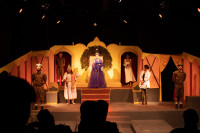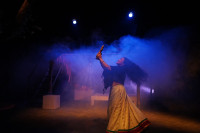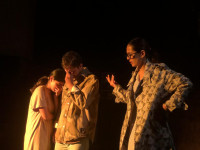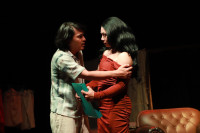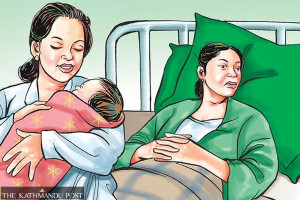Theater
When the world won’t listen, Chandra dreams out loud
‘Who Killed Chandra?’; a symbol-laden exploration of queer identity, inner turmoil, and societal silence in Nepal, unfolding through dreamlike sequences.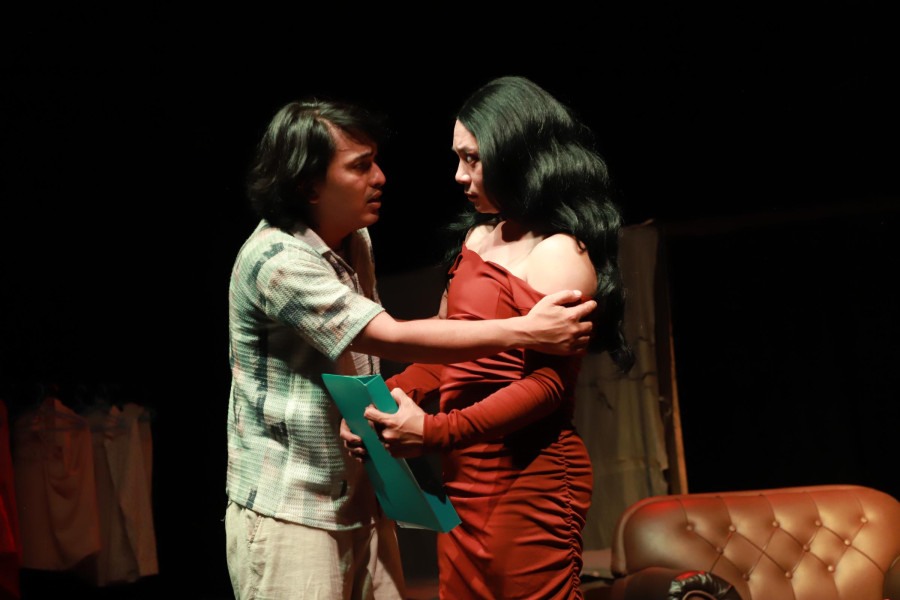
Aarya Chand
Performed at Mandala Theatre, Kathmandu, ‘Who Killed Chandra?’ is a powerful original production directed and written by Sandeep Shrestha, a fourth-batch student of Mandala Theatre Lab, who also stars in the title role. The play is the third presentation of Mandala’s 2025–26 season, showcasing their continued commitment to inclusive, socially reflective, and emotionally honest theatre.
The story begins at the brink of despair: a queer man, Chandra, attempts suicide. He awakens in a surreal liminal space, the mythical Baitarnee river, suspended between life and death. Here, memory, imagination, trauma, and longing collide. In this strange dream-world, Chandra repeatedly relives key moments from his life, from love to betrayal, joy to anguish; each time with slight variations. Slowly, illusions give way to reality, and questions about identity, truth, and acceptance emerge with painful clarity.
The titular question ‘Who Killed Chandra?’ becomes not just a mystery but a metaphor, inviting the audience to reflect on societal, familial, and internalised violence.
At its core, ‘Who Killed Chandra?’ is about queerness, self-worth, and the struggle for visibility. It confronts the systemic erasure and emotional suppression experienced by LGBTQIA+ individuals, especially in South Asian contexts. The play questions social norms, explores the need for self-acceptance, and interrogates the cost of silence. It also touches on themes of betrayal, queer solidarity, identity politics, and the fluidity of truth—ultimately asking whether one’s story can be rewritten in the moments before death.
Director Shrestha’s approach is rooted in collective storytelling. As he notes, theatre is born from a ‘gathering of souls,’ and this play—inspired by creators like Anup Baral and Anup Subedi—unfolds not as a linear narrative but as a dreamscape—at once tender, absurd, and devastating, suggesting rebirth and the potential for self-love.
The performance blends psychological and tragic theatre with stylised physical expression, absurd elements, and comedy flashes. The atmosphere is dreamlike, surreal, and fluid, oscillating between reality and hallucination. Five performers in white, doctor-like coats evoke sterile control or death, while two characters dressed as cows with bells and horns symbolise sacrifice, karma, and the afterlife. These images echo Nepali cultural motifs while also engaging with universal mythologies of passage and purgatory.
The direction leans toward expressionist realism, using theatrical imagery and sound to externalise Chandra’s internal world. Scenes flow like a river, echoing the myth of Baitarnee; a concept deeply rooted in Nepali cultural and religious imagination.
Chandra is the emotional and spiritual centre of the play. Shrestha delivers a layered, courageous performance, navigating the character’s trauma, dreams, and realisations with emotional authenticity. His monologues, especially in the beginning, where he reflects on life, death, and existence, are deeply affecting. His laughter in dream sequences contrasts hauntingly with the pain of his real life.
Tenzu Yonjan, a standout supporting character, plays Monika (they/them) fluidly transitioning between roles—a business partner, a nurse, and a symbol of mystique and duality. Their musical moment set to ‘Anautho Khela Yo Jindagi’ is a seductive, eerie, and electric highlight. The performance evokes the enigmatic suspense of the film Talaash, offering a similar blend of mystery, emotional intensity, and blurred reality.
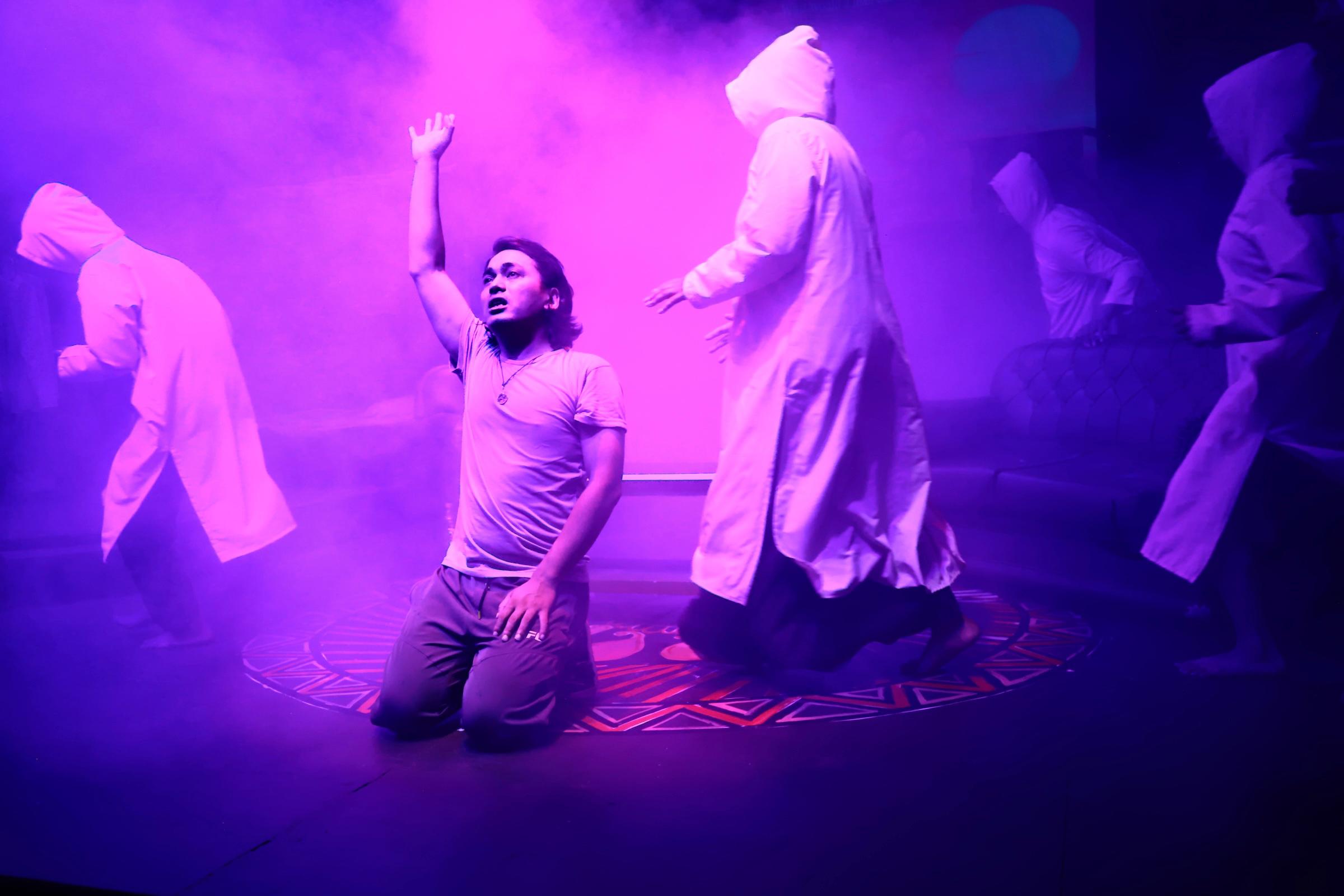
Gaurab (Milan Karki) also impresses in multiple roles—from messenger of death to Chandra’s former lover. His ability to navigate these emotional shifts, including scenes of tension, betrayal, and affection, adds richness to the narrative.
Other notable performances include of Mausam Khadka (Yug) as Roshni’s boyfriend, Bhawana Uprety (Roshni) as Chandra’s childhood friend and Yug’s girlfriend, who becomes a complex figure of projection and confrontation, Kiran Chapagain (Kitto), perhaps the only person who sees Chandra for who he is without judgment and Sita Devi Timalsena as Chandra’s mother—whose eventual gesture of acceptance (placing tika on his forehead) brings emotional closure. The ensemble’s chemistry and timing are key to the production’s fluid shifts in tone.
One of the most tender and emotionally resonant scenes in ‘Who Killed Chandra?’ is the ‘moon conversation’ between Chandra and Yug. Set during an early dream sequence, the two share a moment of vulnerability under the moonlight, speaking in metaphors and promises. Yug confesses his unease when the moon fades, to which Chandra responds with gentle optimism—finding beauty in the moon’s return. It’s a brief but powerful expression of longing and the desire for permanence in a love that feels fleeting, encapsulating the play’s central tension between illusion and reality.
Chandra’s hospital struggle presents a stark tonal shift. Lying on the floor, grasping for life, he is slowly surrounded by five ghostly figures in long white coats—emotionless, faceless, and synchronised. Shrouded in purple light and fog, their clinical detachment is chilling.
In contrast, the entry of the cow characters brings a darkly comic and symbolically loaded energy. Intended to escort Chandra’s soul into the afterlife, they instead get entangled in his dream. Their entrance is a surreal ‘dance of death’—playful yet eerie. Through their bumbling failure to lead Chandra away, the play portrays the absurdity and chaos surrounding death and the inner turmoil of someone not yet ready to let go. It’s one of the few moments that balances humor with existential weight.
Catharsis arrives in the final act. After waking from a coma, Chandra rips up the letter that tethered him to Yug, finally acknowledging that what he mistook for love was, in fact, torment. The rejection of the locket Yug gave him symbolises his break from illusion and his reclamation of agency.
Chandra's voice modulation during monologues, particularly during emotional breakdowns and revelations, demonstrated not just acting skill but strong direction. Physicality—whether it is the synchronised movements of the cow characters, the ghostly gait of the doctors, or the celebratory dances—contributes to the psychological and symbolic layers of the performance. Each gesture and rhythm felt deliberate, stylised yet emotionally grounded.
Lighting is used as an emotional and temporal device. A spotlight illuminates Yug behind Chandra in a hospital bed scene, effectively symbolising memory and grief. Purple mist and ambient lighting during scenes involving the doctor-like figures add to the play’s surreal, liminal quality.
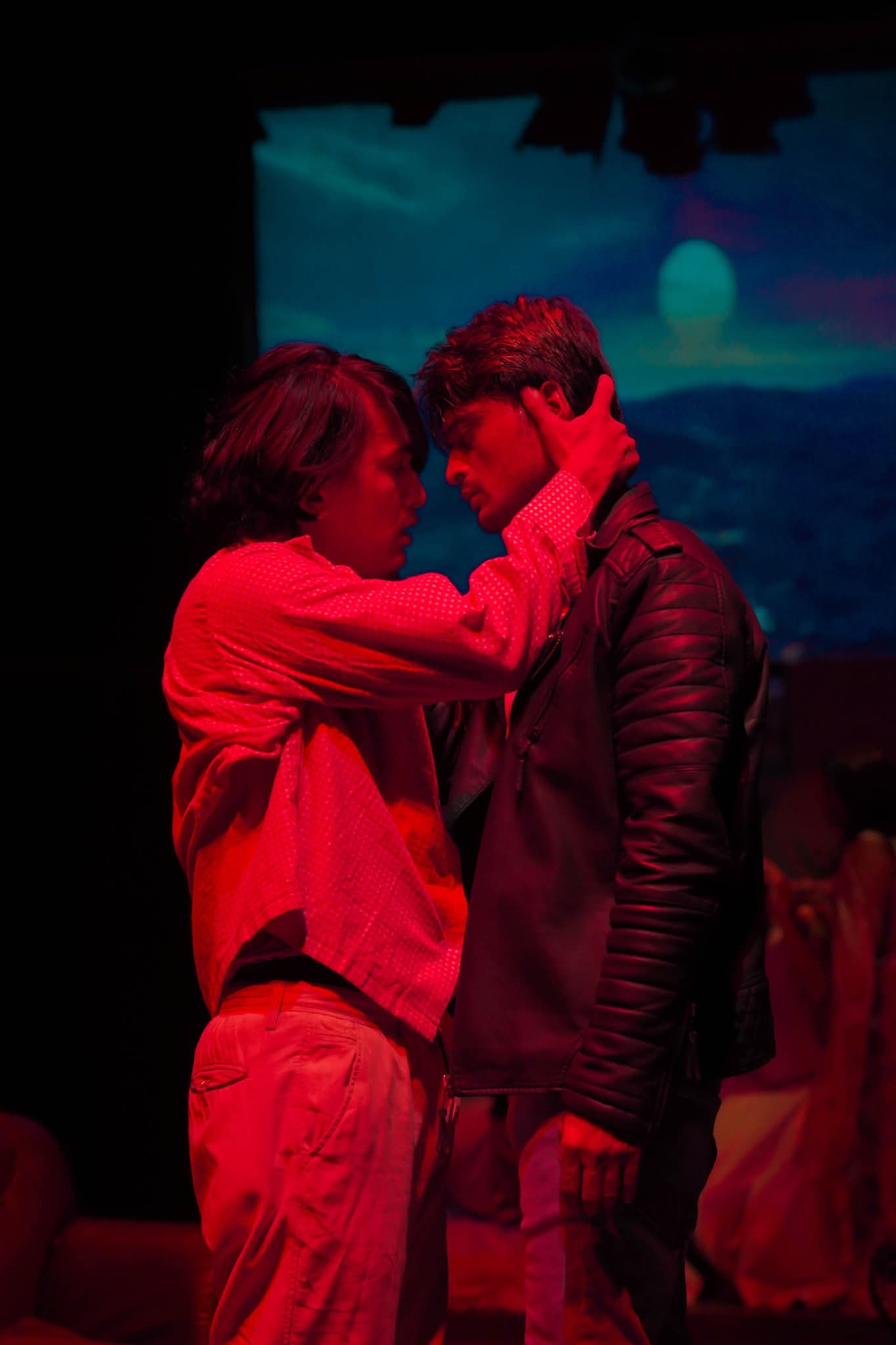
The sound design is also striking, from camera clicks during photo montages to rhythmic, dreamlike musical transitions. Songs are integrated meaningfully, especially in scenes like the cake-cutting or Monika’s dance, anchoring the play’s abstract sequences in emotional realism.
The costumes are thoughtfully designed: white coats, cow costumes, and Chandra’s changing attire each served a symbolic function. The hospital bed and minimal set pieces allowed for fluid transitions, and the abstract design with layered scenes overlapping enhanced the dreamlike storytelling.
The set is sparse but effective. The blocking, especially during dream sequences and symbolic confrontations, creates a sense of layered memory. The imagery of hands raised in surrender, slow-motion dances, and characters frozen in tableau lingers long after the performance ended.
The play finds cultural grounding in Gai Jatra—Nepal’s festival for the dead—which has become a space for queer expression. In the play’s closing moments, Chandra walks into the Gaurab Yatra procession. The play’s conclusion—Chandra walking into a procession, embraced by family and community—suggests personal reconciliation and a broader call for visibility, justice, and dignity.
‘Who Killed Chandra?’ is a symbolic, staged, ultimately transformative confession: a queer man’s final reckoning that reads as universal. It pairs thoughtful design with emotional precision, supported by performers who inhabit their roles with sincerity and control.
This theatre exists not only to witness suffering but also to invite healing—the kind that arises when one dares to name oneself.
Who Killed Chandra?
Director: Sandeep Shrestha
Cast: Sandeep Shrestha, Sita Ghimire, Mausam Khadka, Bhawana Uprety, Milan Karki, Pritisha Adhikari, Kiran Chapagain, Tenzu Yonjan
Duration: 120 minutes
Venue: Mandala Theatre, Thapagaun
Showtimes: Every day at 5:30 pm except Monday and an extra 1:15 pm show on Saturday until August 3




 8.12°C Kathmandu
8.12°C Kathmandu
